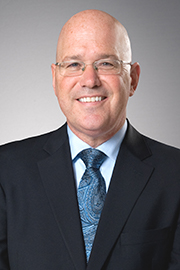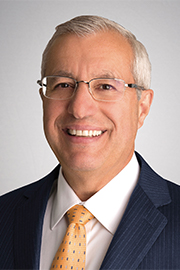- Feb/23/23 9:00:00 a.m.
Good morning, colleagues. Today it is both my pleasure and my privilege to rise to begin debate at second reading of our government’s proposed legislation, the St. Thomas-Central Elgin Boundary Adjustment Act. I’m pleased to say that I will be sharing the government’s time during this leadoff address with my honourable colleague the Minister of Economic Development, Job Creation and Trade.
I’m sure when Minister Fedeli speaks, the minister will tell members of the House that when global companies seek out a location for a new manufacturing facility, there is fierce competition within jurisdictions across North America and the world to win their business. And as we all know, our biggest competitor is south of the border. I know this very well. My riding of Leeds–Grenville–Thousand Islands and Rideau Lakes is right on the beautiful St. Lawrence River, looking over into northern New York state. There have been times when we’ve debated in the House the fierce competition that comes from south of the border. It wasn’t uncommon, back when the Liberals were in power, that Ogdensburg, New York, and the economic development area around there, would have tremendously fierce competition to try to move our businesses from Ontario to northern New York state. So I know this very well.
As a government, to compete for jobs and investment offered by the global marketplace, Ontario needs to move quickly to take advantage of opportunities. That is exactly what we are doing with Bill 63, the city of St. Thomas and the municipality of Central Elgin boundary adjustment act.
At my ministry, the Ministry of Municipal Affairs and Housing, the associate minister, Michael Parsa, the parliamentary assistant, Kevin Holland, and I are actively doing our part to deliver on our government’s plan to build Ontario and lay out a foundation for the province’s long-term economic recovery. We’ve made changes to several acts under my ministry’s purview, like the ones we’re proposing in Bill 63, to get shovels in the ground faster on critical infrastructure, including a number of government priorities: housing, broadband, highways, transit, as well as supporting an increased investment in job creation.
I think we can all agree that when it comes to job creation, it’s one of the great opportunities we have in this House to look at an issue in a non-partisan way. We need to be an attractive location for new business. Our province must offer a strong inventory of site locations. These are sites where the timing and the cost for development and investment is readily known and it’s also streamlined to meet project deadlines. It has become an expectation among investors—a global standard—that these sites are shovel-ready. That’s why I’m here this morning along with my colleague the Minister of Economic Development, Job Creation and Trade.
Our government is taking the necessary action to help secure future investment opportunities for a very large site, or a mega site as they are called. As the Minister of Economic Development, Job Creation and Trade will tell you in further detail, his ministry has identified mega sites across Ontario that could support large-scale strategic investment opportunities—very, very important. Many of us have local communities that participated in some of these efforts. The most recent was the Job Site Challenge, where there were a number of communities that came forward and presented investment opportunities to Minister Fedeli. There are other programs like the certified site program—many of those in the House will know that communities across the province have worked closely with Minister Fedeli’s ministry to create these certified site opportunities. The mega sites bring real, new opportunities for long-term investment that can create thousands of good-paying jobs and many, many more indirect jobs throughout the industrial supply chain that will benefit communities across the province.
The site which has been identified as part of this program has the potential to create thousands of new jobs for the community, the region and our province. This proposed legislation that I will talk more about this morning would reduce red tape to help ensure the site is shovel-ready, as is required to attract the large-scale manufacturing investments in today’s global marketplace. This is something that many, many other jurisdictions have put in place. For Ontario to compete, we need to do the same.
Speaker, many times you’ve heard me speak in the House about too much red tape that can cause delays and ultimately drive up costs for housing construction. We have seen, as a government, how bureaucratic government processes, excessive fees and excessive costs have led to once-viable projects not moving forward. As Ontario’s ongoing housing supply crisis clearly demonstrates, the effect on ordinary Ontarians is serious. This is a very serious situation that our communities are facing today. Too much red tape has a similar impact on industrial investments, and in this case that we’re speaking about this morning as part of Bill 63, it can also deter major investments and desirable, good-paying jobs from our communities. That’s why we need to act now. We need to act today to make the site in question ready for investment. It’s very important that I tabled the bill yesterday and it’s even more important that we’re going to take today’s legislative time to debate it, because time is of the essence.
The site that we’re speaking about currently straddles the municipal boundary of the city of St. Thomas and the municipality of Central Elgin, which is a lower-tier municipality in Elgin county. This means that the permitting and approval processes would involve three municipalities: Elgin county, the municipality of Central Elgin, and the city of St. Thomas. In other words, this process has the potential to involve lots of red tape, lots of delays in approvals and, potentially, the fact that it could drive away this very important investment. Speaker, we can’t let this happen. We cannot let red tape get us on the sidelines and out of the game when there are so many other jurisdictions that have put this as a priority.
If municipal boundaries are not changed, a potential investor would have to work with all three municipalities for all the necessary permits and approvals—these include things like site preparation, infrastructure upgrades, planning approvals, building permits, fire protection enhancements. That would be a very onerous process. It would drag out timelines for building on the site, certainly a disincentive for any potential investor. Changing the municipal boundaries so that all of the site is within the jurisdiction of the city of St. Thomas—which is, again, a single-tier municipality—would make site improvements and construction faster and more efficient.
Our government has been focused on greater efficiency and building Ontario since the very first day we took over as government in 2018. That is why, with the St. Thomas-Central Elgin Boundary Adjustment Act, we’re proposing to restructure the municipal boundaries so that the land comprising the site can all be under one municipal jurisdiction. Anyone who has spent any time in a municipal council chamber who now sits in this Legislature understands this process and knows exactly why we’re here and why we need to act quickly.
Moving the municipal boundary line is really in keeping with this government’s objective to deliver simpler, faster and better services to the people and businesses in our province. One way we’re doing that is making one municipality, St. Thomas, the single point of contact for a potential investor to conduct this essential business at the municipal level. This is going to encourage the speeding up of site improvements. It’s going to ensure that construction is faster and, I suggest, more efficient, while at the same time, it’s creating the potential to bring thousands of new jobs to the community, the region and the province.
Many of us have sat in this Legislature and talked about making sure we put everything in place to ensure that our communities are investment-ready. I’ve sat on both sides of the House; I’ve talked about this over and over again. And finally, we’ve got the opportunity to create a mega site to compete with other jurisdictions, and we need to act quickly. We need to ensure that we move forward with this legislation.
Speaker, I’m very excited about the economic development in municipalities across Ontario, and I know that Minister Fedeli feels the very same way that I do. I’m very, very encouraged by the clear evidence that we have seen that has many municipalities coming forward indicating they’re ready and they’re willing to work with us to help build Ontario.
Last month, I had the chance to meet with many, many municipal delegations, as did PA Holland, as did Associate Minister Parsa, at the Rural Ontario Municipal Association conference, or ROMA—as municipal officials who now are provincial MPPs know and use that term well. At ROMA, the message from mayors and from councillors was clear: Our government needs to continue its focus on removing barriers to growth and to economic development so that we can secure the very real and tangible benefits that this growth will bring to Ontario. We need to work with our municipal partners to ensure that they have the infrastructure and other supports that are in place to attract this type of investment, including in less population-dense areas like Elgin county.
That’s why, for instance, the government has been making historic investments in rural Internet services as well as traditional infrastructure like roads and bridges. And that’s why my ministry is also focused on getting housing built across Ontario, both in densely populated areas, but also in big cities like Toronto and Ottawa. As we saw at ROMA, we’ve got willing partners in rural and northern municipalities in every corner of the province.
Last fall, for instance, we introduced our third housing supply action plan, More Homes Built Faster. This builds upon the previous housing supply action plans, More Homes, More Choice, which we tabled in 2019, and More Homes for Everyone, which we tabled early in 2022. These plans are a part of a government-wide strategy to build Ontario and ensure the conditions necessary to support growth are in place.
That’s also why my colleague the Minister of Labour, Immigration, Training and Skills Development, the Honourable Monte McNaughton, has been working so tirelessly to ensure that Ontario has the workforce that it needs to support economic growth—while investments in skills development, education and support for newcomers in our province are all very, very important as part of our plan to help build Ontario.
We have to ensure, as well, given all that great work that Minister McNaughton is doing, that we have enough housing for the increased labour and the increased immigration as we welcome new Canadians to the best province to live, work and play in the world. We know that workers will drive Ontario’s economic growth, but they also need a safe and attainable place to call home.
Our policies are working. In the last two years, we’ve seen the highest level of housing starts in Ontario in more than three decades, while we’re within striking distance of going up over the 100,000 housing starts in a year. Minister Parsa actually talked about it yesterday in the House. Last year we saw close to 15,000 purpose-built rental housing starts, which is the highest level of housing starts in Ontario’s history—great news. The policies that we’ve enacted in our most recent housing supply action plan are sure to add to this record. We’ve made it cheaper and easier, for instance, to build affordable housing, non-profit housing and purpose-built rental housing, and we’re working with our partners in government, industry, labour and the non-profit sector to build homes that Ontarians need.
Speaker, we know that for Ontario to continue to thrive we need homes of all types to be built to reflect the individual needs of Ontarians. That’s why we’re making it easier to ensure that there is gentle density in existing communities by allowing three units to be built as of right in many of our existing communities, both in urban and rural areas. This means Ontarians will now have access to the types of homes people have been talking about for years, like laneway homes, garden suites, basement units—things that we need to incent. We need to encourage our municipal partners to get shovels in the ground faster, which will provide more housing options in the areas that are already densely populated.
But we’re not stopping there—and I want to make it very clear: We’re not done yet. Our government has also provided billions of dollars to support vulnerable Ontarians. Since the beginning of the pandemic, we’ve allocated about $1.2 billion through a program called the Ontario Social Services Relief Fund.
I’ve said this in the House before; I can remember it like it was yesterday. Minister Smith, my seatmate to my right, and I came up in the middle of a snowstorm, much like the one we had last night, in the middle of the pandemic—I think we were on day 4. We thought the pandemic was going to last three weeks. Nobody knew, right? So we announced the Ontario Social Services Relief Fund, a very modest fund to allow our service managers to get on the ground, help our most vulnerable citizens, get PPE, hire staff and do whatever it takes to make sure people are safe.
It’s hard to believe that after that modest announcement that the two ministers made—it wasn’t even live; it was in front of a teleprompter, because even then everybody was working from home. To be able to take a modest program and then build it over the last three years to $1.2 billion is a real testament to the work that all MPPs did in the middle of the pandemic to make sure people had a safe, secure place to call home.
The total of what we’ve invested as a government is $4.4 billion over the last three years to help grow and enhance community and supportive housing. Our government knows that helping more Ontarians find a home that meets their needs and their budget is really in the best interests of all Ontarians. It is that context in which changes that we’re proposing today in Bill 63 should be viewed. I want to stress that. We need to look at all of the measures that government has done when we deal with why Bill 63 is on here today.
Economic development in an increasingly competitive, often protectionist global economy is never easy. The challenges of the last few years have clearly demonstrated that jurisdictions that are unprepared to support growth fall behind. That’s something that Ontarians simply cannot afford.
The government is creating world-class transit. We’re making record investments in new housing while we’re also making historic investments in infrastructure.
I want to thank Minister Surma for all of her work on the infrastructure file. She is doing great things in Ontario—not just with roads and bridges, but a tremendous progressive agenda on the expansion of broadband in communities across Ontario.
We’re also, as a government, cutting red tape. We’re easing the regulatory burden on ordinary Canadians, so that we can move forward quickly to deliver on the priorities that we were elected to pursue.
The changes that we’re proposing today are all about making it easier to invest in Ontario, easier to bring jobs to our province, easier to enjoy the substantial public benefits that a thriving economy gives to all Ontarians. That’s what we’re here for today.
Speaker, as a former mayor myself, a former CAO, I know that municipalities play a critical role in making these public benefits a reality. For one thing, municipalities help deliver the preconditions for economic growth, the policies that I was discussing earlier that benefit Ontarians. For instance, we need municipalities on board if we’re going to tackle Ontario’s housing supply crisis, since we know that they are playing a critical role in cutting red tape and making it easier to build homes that Ontarians need. Municipal governments also play a critical role in building public transit and public infrastructure, requiring public services that support economic growth. Often, they do it in close partnership with the provincial government.
As Ontario’s Minister of Municipal Affairs and Housing, I’ve got the opportunity to see first-hand municipalities across this province and their great desire to work with our government to deliver important public services to Ontarians. Just last month, for example, I was pleased to announce that the provincial government is extending the deadline for implementation projects under the latest intake of the Municipal Modernization Program, and also the Streamline Development Approval Fund. This is going to help municipalities streamline, digitize and modernize their services—very important, because once again, they need to deliver the conditions that are necessary to support economic growth and prosperity in our province. This is a key partnership that we have with municipalities. We need to work together.
I’m very excited by the past successes that we’ve had working with our municipal partners—all 444 municipalities—as well as the opportunity to build on the success with the bill that’s being debated today.
I want to thank my colleague behind me, the local MPP, Rob Flack from Elgin–Middlesex–London, for his tremendous advocacy for his community. I really appreciate his support with Bill 63 today. He’s doing a great job.
I also want to talk about my ministry. As I’ve said, with MPP Flack supporting us—I want to talk about the MMAH support for the Ministry of Economic Development, Job Creation and Trade. I want to take a moment to look back on the changes made by several acts under my ministry’s purview that increased investment and created more jobs. We got shovels in the ground on a bunch of critical infrastructure projects, including housing, broadband, highways and transit. An example that I’ll give the members this morning is, we made changes to regulations under both the Municipal Act and the City of Toronto Act which enabled Ontario municipalities to directly access financing from the Canada Infrastructure Bank for capital projects, including the financing of zero-emission buses. To get shovels in the ground faster, we’re also streamlining the land division approval process under subdivision control provisions of the Planning Act.
We’re also working with our partners in the building and development sectors to modernize the delivery of building code services and help accelerate housing construction across the province. We’re supporting efficiency in the building and construction sector by updating the building code to clarify that building officials have the discretion to use alternate methods to conduct remote inspections. We did this because we needed to work with our partners to remove these types of barriers while still making sure we have a safe, secure system. Our building code is one of the best in North America, and I want to thank all the officials at the ministry for the great work that they do.
We’re so proud that municipalities now have the flexibility to design and implement their own internship program for building officials—something that I remember talking to municipalities about the first month that I was here as minister, something that had long been discussed with municipalities. We’ve moved on those types of things because we needed to accelerate construction activity, but we also needed to address both current and future staffing shortages.
Additionally, we recently consulted the sector on potential changes to the qualification program for Ontario’s building practitioners that would be implemented in the near and the long term—very, very important stuff.
Our majority component of the work with the building and development sector is further harmonization of Ontario’s building code with the national construction codes. Increased harmonization of these codes—while it doesn’t sound that sexy, it does, in the long run, help reduce red tape, and it helps overcome barriers related to trades. It also includes product manufacturing along with building design and maintenance. Again, we have a very strong building code. We’re the envy of many jurisdictions because of its safety and its innovation. In turn, the market standardization across the country is so very important. Harmonizing our building code with the national code just makes sense. Our next edition of the building code is expected to be released later this year.
One of the things that I’m particularly proud of on the economic development side is the fact that our government, through my ministry, has been using minister’s zoning orders to accelerate priority infrastructure projects, something that I think was long overdue in the province. Minister’s zoning orders—some people call them MZOs—help kick-start the planning approvals process by getting zoning in place for critical local projects. They include housing, long-term-care homes, health care facilities, transit-oriented communities—lots of economic development initiatives. In partnership with our municipalities, these zoning orders are a really important part of the government’s policy tool kit to help these types of local projects move at a pace that Ontarians both need and deserve. They’re making really positive changes in communities right across Ontario. They’re currently in place and they are creating jobs, they’re helping to build exciting new business investments, and they’re accelerating new housing builds.
In the past, I’ve been proud to make MZOs to support economic development projects in conjunction with my friend the Minister of Economic Development, Job Creation and Trade. The example I’ll use is the request from the city of Windsor and Minister Fedeli that I make an MZO to accelerate the development of a 4.5-million-square-foot facility for NextStar Energy. The plant in Windsor will be a battery plant for electric vehicles. It’s a joint venture between LG Solutions and the automaker Stellantis. Once fully operational, that facility will provide approximately 2,500 well-paying jobs. It’s a great boost to the city of Windsor and all those surrounding communities. That’s how our government works together to boost our economy.
Also, last year, at the request of the township of Oro-Medonte, I made an MZO to help speed up the expansion of manufacturing and warehouse facilities for Wolf Steel. That’s the manufacturer for the famous Napoleon brand of fireplaces and barbecue grills. Wolf Steel is the township’s largest employer, and the expansion, once complete, will provide another 180 jobs to Oro-Medonte. Again, that’s our government working to boost Ontario’s economy.
In 2021, at the request of the city of Markham, I made an MZO to expedite the creation of a tremendous program. It has a studio, film production facilities, a science park innovation hub, office space, a hotel, art galleries, child care centres and theatres. It actually will eventually employ about 6,000 people—6,000 new jobs and an estimated $1.5-billion investment in annual economic output. That’s, again, our governments working together, our ministries working together, to boost Ontario’s economy.
Our government is proud of the partnerships we’ve developed with municipalities. We’re going to continue to work with them and to listen to them to create the tools that they need to address local challenges.
I want to give one last example of the power of MZOs to help expedite and create new jobs. I’ve made a total of 13 MZOs to support transit-oriented communities, one of the government’s most exciting programs we have. Those are the developments on the Yonge North subway line and the all-new Ontario Line that will help create almost 55,000 jobs.
I could go on with many, many other examples, Madam Speaker—it’s great to see you in the chair this morning. I’m so proud of our government’s record on MZOs. In fact, minister’s zoning orders under this government are helping to create over 150,000 jobs. It’s a great-news story and, again, another example of our government working together to boost Ontario’s economy.
When we look to the city of St. Thomas, one of the communities that’s in this bill today—the primary community we’re dealing with—it’s a growing community, an area that’s ready for industrial growth. It’s the heart of southwestern Ontario, also known as Canada’s manufacturing heartland, I’ve heard people say.
Since the first day we were elected, our government was both committed to protecting and also expanding good-paying jobs. Our best salesman, as the Premier says—Premier Ford always says this, that Minister Fedeli is our best salesman; Minister Fedeli, in turn, says that Premier Ford is the best salesman. I’ll use a baseball analogy: Vic is the set-up man and the Premier is the closer. So it’s a great team. We’re very fortunate to have such a committed minister and such a committed Premier on job creation, and I want to thank them, just before I turn it over to Minister Fedeli.
The region that we’re talking about has traditionally been one of the most prosperous in Ontario, but it has also seen difficult times. Fierce competition over investment is a continual challenge in jurisdictions. This area has so much to offer. It’s so well positioned. It’s close to the US border and the Great Lakes, which makes it ideally suited to support enhanced international trade, both from our traditional trading partners in the United States but also beyond. The area is also home to Ontario’s advanced manufacturing supercluster.
We know that further development of our province’s manufacturing capabilities will help Ontarians prosper in good times and protect them from economic fallouts in bad times. So I’m really looking forward—and I’m eager to support the Minister of Economic Development, Job Creation and Trade as we help new investments in south-western Ontario.
This land is of high value when it comes to strategic investment opportunities. It’s just a great program. And you can tell this morning that if I’m excited—you can’t wait until Minister Fedeli hits the stage, because he’s even more enthusiastic. I’m just the legislative tool that gets this mega site ready.
Our government has a strong record of clearing away the impediments and barriers that stand in the way of both progress and growth while maintaining regulations that keep people both safe and healthy.
Changing the municipal boundaries through the proposed St. Thomas-Central Elgin Boundary Adjustment Act gives this community, this region and, indeed, this province a fighting chance at attracting investments and the potential to create jobs. We’re trying to reduce duplication. We need to manage our resources in a way that is sensible, to attract businesses and the people who run them.
I know that the city of St. Thomas has seen its population grow by about 10% from 2016 to 2021. The labour force is led by a large manufacturing sector.
We’re very excited about this opportunity. We want to continue to open our province for business. We want to build Ontario up. This is a great project. I encourage all members of the House to support our efforts in creating this mega site.
Thank you, colleagues, for allowing me the opportunity to open debate.
I’ll take this opportunity now, at the 26-minute mark, to let Minister Fedeli be the closer, to talk about all the wonderful things we’re doing with Bill 63.
- Hear!
- Rabble!
- Feb/23/23 9:00:00 a.m.
Good morning. Let us pray.
Prières / Prayers.
Mr. Clark moved second reading of the following bill:
Bill 63, An Act respecting the adjustment of the boundary between the City of St. Thomas and the Municipality of Central Elgin / Projet de loi 63, Loi concernant la modification des limites territoriales entre la cité de St. Thomas et la municipalité de Central Elgin.
- Hear!
- Rabble!
- Feb/23/23 9:30:00 a.m.
I recognize the Minister of Economic Development, Job Creation and Trade.
- Hear!
- Rabble!
- Feb/23/23 9:30:00 a.m.
Thank you very much to the Minister of Municipal Affairs and Housing for bringing this bill forward. You have heard for the last 32 minutes how very important this is. I want to congratulate you and your team for bringing this to the closing line, Minister Clark. This is excellent work.
So why are we here? Because there is a critical shortage of shovel-ready industrial mega sites in Ontario, and this shortage places Ontario at a significant disadvantage when competing for high-value projects that we are seeing all around the world. Without immediate action, we risk losing the opportunity to compete and win these huge, transformative investments.
Think about other jurisdictions around North America, especially in the US. They have projects that are ready to go. They have land that is ready to go. They have a fulsome inventory all around North America, and we don’t. There are hundreds of thousands of jobs that will go with all of these properties around North America, and we’re not where we need to be. We need to show that we’re not just open for business, but that we’re ready for business.
So let’s understand why we got to where we are. I’m going to be very blunt: Years of mismanagement under the previous government cost Ontario 300,000 manufacturing jobs. In fact, I remember sitting in opposition and looking at the previous government’s final—thank God it was their final—report on the economy, and it’s very clear: They threw the towel in on manufacturing. They completely gave up. They did not think ahead and start to assemble land in Ontario, and you wonder why.
I’m going to read a quote now. This is from that government’s report on the economy: “The structure of the Ontario economy will continue to shift from goods-producing to service-producing sectors.” That’s their admission. They said “no more” to manufacturing. They went on to say that that will result in “shifting employment from goods-producing industries, in particular manufacturing, to” the service sector.
Speaker, they threw the towel in. They gave up on those 300,000 people who lost their jobs in manufacturing. The previous government just said, “That’s it. We’re throwing the towel in. We’ll give up on manufacturing.” Forget the fact that for more than a century, Ontario has been the manufacturing hub of Canada. We’re the economic engine of the country, and they said, “No, we’re going to give up.”
In fact, we heard even further—and I’ve said this in this Legislature many times—that the auto sector was starting on a downward spiral under the previous government. High costs, high taxes, high energy rates, red tape—all of those together were watching the auto industry spiral downward.
Sergio Marchionne was the former chair of what was then called Fiat Chrysler. He sat on a stage with former Premier Kathleen Wynne, and she mused out loud, “Would Chrysler be expanding in Ontario?” He looked at her with this quizzical look on his face and he said to her, “This is not what I would call the cheapest jurisdiction.” Then she pushed him and he went on to say, “You need to create the conditions to be competitive.” That was like a real gut punch to Ontario—that we have gone from this worldwide envy of manufacturing to this humbled loss of 300,000 men and women. Every single company in the auto sector was reducing production instead of increasing. Instead of fixing the mess they created, they just threw the towel in and gave up.
Enter Premier Ford. Premier Ford brought us together as a caucus and said, “We’ve got to do everything in our power to lower the cost of doing business in Ontario.” We visited every one of the auto manufacturers, and they all told us, “Your costs are out of control. You’re not business-friendly in Ontario. We’re not here.” He said, “Give us a chance. We’ll come back to you with a plan,” and we developed Driving Prosperity. That’s the name of the plan that was going to bring back the auto sector.
It started with a reduction of WSIB, workplace safety insurance—a 50% reduction in the cost to business of WSIB. That is a $2.5-billion savings every single year to the business community who reinvested that money—no reduction in the benefits of WSIB, just in the cost. It was so stuffed with cash at the expense of all these businesses with high WSIB rates that it was lowered. That’s a savings of $2.5 billion annually.
Then we put in what’s called a capital cost allowance. What that meant was that you can write off the cost of your brand new equipment. If you decided to invest in Ontario and bring in brand new equipment, you can write that equipment off in the first year. That’s a huge advantage to Ontario. It saved a billion dollars annually by businesses.
Then we had red tape reduction. We have our own Minister of Red Tape Reduction. Nine bills have come through the Legislature—two a year—that reduce red tape. It’s about a $500-million annual savings in red tape. A couple of them are very specific to the auto sector. We sat with them and we said to them, “Show us, tell us what red tape you need—that is duplicative with the federal government, or other reasons. Tell us what you need. Show us what you need to create new jobs.” And that’s what we did.
We lowered the cost of industrial and commercial hydro rates by an average of 15%. We lowered the provincial share of municipal taxes in every community of Ontario so that they all have the same low tax rate now: 0.88%. That’s a $450-million annual savings to the business community.
Add it all up—$7 billion a year in lower cost to do business in Ontario. That is this huge advantage.
We went back and started knocking on the doors of all of these auto companies that were abandoning Ontario and said, “We’ve done what you’ve said.” It immediately put the brakes on them leaving and began the accession. We first heard from Ford in Oakville, with a $1.8-billion announcement; then Honda in Alliston, with a $1.4-billion announcement; GM in Oshawa and in Ingersoll, with a $2.3-billion announcement; Stellantis in Windsor and in Brampton, with a $3.6-billion announcement; Umicore in Loyalist, with a $1.5-billion announcement; and, of course, the LG NextStar Energy battery plant in Windsor, with a $5.2-billion announcement.
Last week, Magna announced their half-a-billion-dollar investment at their six plants in Ontario. Half of that money—more than half of it—goes into Brampton for a brand new facility on EV battery decks, basically; they’ve also got Newmarket, Belleville, Guelph and Penetanguishene.
These are all communities that are adding, collectively, 1,000 new jobs in Ontario, and that brings us to $17 billion from zero—from worse than zero, if you could imagine, to $17 billion in announcements from the auto sector in two years alone.
But it doesn’t just stop at the auto sector. When you think about the other kinds of investments, we’ve done about 150 deals across Ontario in the last couple of years. There’s $3 billion from the life sciences sector, with companies like Sanofi, Roche, CCRM in Hamilton, Resilience and others. Billions of dollars in the tech sector—Telus announced $23 billion in Ontario; Nokia, in Ottawa, a $340-million investment.
Again, we’ve done 150 deals and five trade missions to eight countries, just since the last election. And we’ve heard the same two things from every single company—they love Ontario. This is their words. Think about the turmoil that’s created around the world, coming out of the pandemic. We have Russia’s illegal war on Ukraine. We have the whole China question. All of this turmoil is consuming the business world and families, and they look to Ontario as a sea of calm. They say, “That’s where we want to be. We want to be there.” They also say to us, “We also like Ontario because it’s a safe jurisdiction.” They know that it’s safe for their employees to be there. They know that it’s safe for their executives to go over. They know that it’s safe for families. They all said the same thing in the nine countries that we visited since the election—eight countries plus the United States.
The end result of all of this action over the last few years, since the day we were elected to a week ago: We’ve seen over 600,000 new jobs created in the province of Ontario—300,000 before the pandemic and 300,000 new jobs since the day the pandemic struck Ontario.
Interjections.
- Hear!
- Rabble!
- Feb/23/23 9:40:00 a.m.
That is applause-worthy. It really is.
The auto sector accounts for 100,000 jobs throughout the province, and for the very first time in the history of the auto sector, northern Ontario will now be included. The auto sector now, because of electric vehicles, takes in critical minerals, the processing of critical minerals, the production of the parts for batteries, batteries, the production of auto parts—we have 700 parts makers in Ontario, and 450 tool and die and mould makers in Ontario. We’ve got 300 companies that are in the connected and autonomous vehicle business.
Think about the very first electric vehicle in Canada that came off the assembly line only a month or so ago, GM’s BrightDrop. It’s basically a FedEx delivery vehicle, the very first electric vehicle rolled off the assembly line. It was designed and engineered in Markham, Ontario, by GM. Seven hundred employees are there.
Ford has 500 of these types of employees in Ottawa. BlackBerry QNX has about 500 in Ottawa as well.
In Windsor, Stellantis has about 800 employees. They’ve put in almost a billion dollars and have two—two—North American centres of excellence, research centres. It is their head location for battery design and battery research.
That’s what’s happening in Ontario, and it’s because we’re competitive that we have this edge. We have a talented workforce. We have state-of-the-art research and development. We have award-winning manufacturing.
Look at Toyota. Toyota won the J.D. Power award for the best production plant in the world. This isn’t the best Toyota plant; it’s the best auto plant in the world. And because of electric vehicles, we now have this critical mineral part of it that’s added.
But we’ve also got a clean energy advantage. Speaker, if you bought an electric vehicle in the United States, you would think you’ve made a contribution to society by buying an electric vehicle. But in the US it’s made, sadly, with energy that’s made from burning coal. So if you buy a car that has a battery made in Kentucky, you’ve got about 6% clean energy. If you buy a car that has a battery made in Indiana, you have about 7% clean energy. You’ve got assembly plants that are made without clean energy. You’ve got steel in the doors and the hoods that are made with coal-produced steel.
Shift to Ontario for a second. You’ve got a clean energy environment—94% clean energy is what we build our cars with. Our battery companies will be able to buy an equivalent of 100% clean energy. At Dofasco and at Algoma, they’re now making steel not from coal, but from an electric arc furnace, which means we have green steel building our cars, with clean energy building our cars. So when you buy an electric vehicle, as they start to come off the assembly lines in Brampton and in Oakville and in Windsor, you will have a car that you can be proud of because it is not just an electric vehicle, it is a zero-emission—a green—vehicle, which will be the envy of the EV sector. That is a very, very big component. Think about Dofasco alone. You’re talking about the equivalent of taking a million cars off the road a year just by that one conversion alone.
The critical minerals are something that I think will be the sleeper story this year. I think it was the Windsor Star that did an interview and they asked, “What is going to be the exciting news this year?” And I said, “You watch. The sleeper story will be a lithium hydroxide plant for northern Ontario.” I genuinely believe that. I don’t normally overpromise because we don’t like to ever underdeliver, but I can tell you I really believe that we are going to see lithium projects in northwestern Ontario start to happen, and they’re going to need a lithium hydroxide plant. You need that liquid to make a battery, and we believe that the minerals of northern Ontario should be processed here in northern Ontario and tie the auto sector into the north for the very, very first time.
We have a real competitive advantage. Ontario is one of the very few jurisdictions that has every mineral necessary to make a lithium ion battery. We’ve got great, great new nickel finds around Timmins, if you can imagine—a gold town like Timmins. South of Timmins they have a fabulous new nickel find. Just north of Timmins, Canada Nickel is there with a great new nickel find.
In Sudbury, where we’ve seen Onaping Depth go down—it’s an old mine that couldn’t get any deeper because of the technology. Well, today you can actually send electric vehicles down there. You don’t need to worry about ventilation anymore because you’ve got electric vehicles doing the heavy work. They’re going to go deep, as deep as they possibly can. That’s because of the electric vehicle revolution.
Then we look at the Ring of Fire. Initially, the play was all about the chromite that is there. I think you’ll actually see them move the chromite out of the way to get to the nickel that’s there.
That’s why we’ve got this road to prosperity that we’re building. We’ve got $1 billion committed. We hope our federal partners will commit their $1 billion into that plan.
Bloomberg has acknowledged everything I’ve just said here today. Bloomberg ranked Canada as second in their annual global battery supply chain report. Think of where we were three years ago. We had zero—zero—electric vehicle production. Some $300 billion was invested in North America in electric vehicle and battery announcements. We got zero of it under the previous government—zero. We were able, through our Driving Prosperity plan, to put a plan together—$17 billion. I’ll be very frank: We have at least that much in the pipeline. We won’t win it all, but we’ve got a big pipeline of projects lined up for Ontario over the next two years. Bloomberg moved us from nowhere in sight of anybody to second in their annual global battery supply chain report. We’re first in North America, ahead of the US, second globally. That confirms that we have indeed created the right conditions to attract investments, create jobs and remain competitive.
That brings us to the one missing piece: why we’re here today. We are in fierce competition right now for large investments. As I’ve said, we have a big pipeline filled with projects, but we just don’t have the land. We need to assemble, very quickly, large pieces of land for large potential investments. Close to 40 US jurisdictions offer a certified mega site program—key competitors, all through the States. They have shovel-ready sites and an expectation of an investor locating there. That’s why we are laser-focused right now on securing large anchor projects in the auto and in the EV space, but this critical factor will be having a suitable site.
Timing is known. Costs are known. Project timelines are out there. We know we needed this land, and that’s why, in November 2019, we launched the Job Site Challenge program. This is Canada’s first challenge that went out where municipalities, economic development agencies and industrial property owners can put forward large tracts of land—500 acres, 1,000 acres, 1,500 acres—so that we can use them to support large-scale manufacturing operations. Just think about it. For context, 500 acres—that’s almost 400 football fields. That’s what 500 acres looks like. And 1,500 acres obviously can support three times that.
We need to immediately build an inventory of what we call mega sites. These are sites that are investment-ready. These are sites that would be owned, contiguous pieces of property, either serviced or ready to be serviced. We’ve seen the successes of LG Energy in Windsor. We’ve seen the success of Umicore in Loyalist township. There is a significant demand for shovel-ready sites.
Again, I’ve said we have a big amount in our pipeline. We’ve secured $17 billion, with several more announcements coming. We have about that much in our pipeline. But what we need is to give the investors and those potential companies the confidence in the future of Ontario—that we have land available for them.
This particular site in St. Thomas that we’re speaking about, and in Elgin county, is considered a highly attractive mega site. It has been identified as one of the very few potential mega sites in the province. It has a vast amount of acreage. It has close proximity to the major routes. It’s fully serviceable for electric, gas, water, waste water. And it has a high probability that it could be sold to one of these investors.
The site, as you’ve heard from Minister Clark, straddles two municipalities: the city of St. Thomas and the municipality of Central Elgin, which is in Elgin county. These two municipalities have very different steps in permitting requirements. They have different timelines for permitting. It creates confusion and complexity. You could imagine an investor who wants to buy a big hunk of land but has two municipalities with different rules and guidelines—a building that could potentially straddle two municipalities. We need to take the piece of one and join it to the other. There’s a lot of red tape that could come. There’s a lot of delay in meeting timelines.
Speaker, we need to unlock the full potential of this site, and that’s why the Minister of Municipal Affairs and Housing has introduced legislation that would change the municipal boundary so that site would be completely located in St. Thomas. It would reduce red tape. It would ensure that the St. Thomas site is truly shovel-ready in a very near term for a potential investment. This legislation would allow the city and the province to proceed quickly with permitting, proceed quickly in preparing the site to meet any potential investor timelines. It’s going to allow Ontario to remain competitive. It will allow us to position the province as an attractive place to invest and to grow.
These proposed changes have the potential to bring significant economic benefits to the people of St. Thomas, to the people of Central Elgin and all of the surrounding communities. We’re going to work very closely with the affected municipalities with respect to proposed legislative changes. We’re going to continue to consult with Indigenous communities about the St. Thomas industrial site.
And we will continue to work very, very hard to identify large-scale industrial sites throughout Ontario, where we know that we have so many prospects and so little assembled land.
We continue to say that Ontario is the ideal destination for manufacturers. We have a world-class auto supply base, we have a growing EV and battery-supply-chain footprint, we have reliable clean energy, we have northern Ontario’s critical mineral resources—we have an ecosystem in Ontario.
Certainly, we have one of the greatest auto ecosystems. We’re the only jurisdiction in North America with five different auto manufacturing companies. That’s unique in all of North America. We are the number two automaker in North America.
Speaker, we’re also the number two tech cluster in all of North America. When you look at the cars of the future, it’s basically going to be a computer on wheels. Well, as the number two tech cluster in North America, we have that tech ability, and as the number two automaker, we know how to attach them to wheels. That’s our expertise. We have absolutely great and spectacular days ahead of us in Ontario in the auto, in the EV sector.
But these mega sites can be for all kinds of projects, whether it’s in the tech field, whether it’s in the life sciences field, whether it’s in the aerospace sector, whether it’s in the chemicals sector. We have so much potential in Ontario, and I won’t say it’s untapped potential, because look at what we have achieved: 600,000 men and women went to work today in a facility in Ontario that they did not work at only four and a half years ago. This is a monumental shift in what was happening.
We saw the decline of Ontario’s manufacturing—the former government that threw the towel in and, in writing, gave up on the manufacturing sector.
Premier Ford came along, and Driving Prosperity was written. It was our blueprint for success. That’s why we have 600,000 men and women working today who weren’t working.
- Hear!
- Rabble!
- Feb/23/23 10:00:00 a.m.
My question is for the Minister of Economic Development, Job Creation and Trade.
It’s reassuring to know that our government is making every effort to attract new investments, remain competitive and create new, good-paying jobs. I applaud the government for introducing legislation that will continue showing the world that Ontario means business and that Ontario is open for business.
As the government continues implementing its ambitious plan to build Ontario’s economy, I’m reminded that this legislation is not the only wrench in the tool box.
Can the member elaborate on the other efforts the government is using to attract investments, while also ensuring that our own businesses and entrepreneurs here at home have everything they need to create jobs and build the Ontario of tomorrow?
- Hear!
- Rabble!
- Feb/23/23 10:00:00 a.m.
To the Minister of Economic Development, Job Creation and Trade: We lost roughly 20,000 manufacturing jobs in Waterloo region under the tenure of the former Liberal government. That was a huge blow to our region.
I only caught about the last 10 minutes of his dissertation, if you will, but I was wondering if he could touch a little bit on what these types of investments mean to communities not just in southwestern Ontario, but all across Ontario—I think it does truly speak to the prosperity that is ahead when we see this type of investment coming to the province—and what they mean to the average, everyday person.
- Hear!
- Rabble!
- Feb/23/23 10:00:00 a.m.
It is now time for questions and answers.
- Hear!
- Rabble!
- Feb/23/23 10:00:00 a.m.
Thank you to the member for the question.
It’s interesting, in the auto sector—you always hear about these indirect jobs that are created. When I was mayor of the city of North Bay and my economic development team would say, “Well, they’re going to bring 10 jobs, but there are going to be 40 spinoff jobs,” I never understood and never acknowledged that that was actual. They were talking about a big stretch. But in the auto sector, they’re not talking about a stretch, because the auto companies assemble vehicles; they don’t make many of the components. So for every $1 that’s invested, for every job that goes to an auto plant, you can see about $7 to $9—some will say $12—invested in the other sectors. You will see seven to nine to 12 jobs created in the other sectors. They don’t make a tire. They don’t make a steering wheel. They don’t make a windshield. Somebody else makes that for them. So when you have an increase in a plant, you have an increase in jobs all around.
Because it’s critical minerals now from the north—no matter where you are in Ontario, you are now going to benefit from the auto investment.
We’ve got a number of other advantages that I did not have an opportunity to speak about. I talked about the fact that we have this ecosystem here in Ontario, but it’s supported by this beautiful talent that we have, which is rejuvenated every year by 65,000 STEM grads—science, technology, engineering and math—every year. We have this unique ecosystem that also includes trade deals with 50 different countries around the world. So when you are building something in Ontario, you have the opportunity to export that, tariff-free, to most countries in the world—an extremely competitive advantage.
- Hear!
- Rabble!
- Feb/23/23 10:00:00 a.m.
Thank you to the members opposite.
When the Minister of Municipal Affairs and Housing was speaking, he talked about housing and supporting municipalities.
Our city council is working on the budget this year, and they’re very concerned about property taxes going up. One of the reasons they’re concerned is because citizens are very upset about paying more taxes but having potholes and snow plow issues all the time. One of the issues that they’re struggling with is the downloading of developer service fees from housing and the fact that, in Sudbury, for the supervised consumption site, the province still hasn’t chipped in $1.1 million.
I’m asking the minister: Do they plan to compensate the city of Sudbury for the shortcomings from the province?
- Hear!
- Rabble!
- Feb/23/23 10:00:00 a.m.
I am having a great deal of difficulty hearing the minister of housing and the member from Thunder Bay–Atikokan make claims about supporting more homes for everybody—including supports for non-profit housing—since you know very well that the two shovel-ready projects I’ve been talking about for the last six months in Thunder Bay have not been able to access any support or funding from this government. There doesn’t appear to be a funding stream available for not-for-profit housing projects. These projects would bring 100 new living units to Thunder Bay.
I’m wondering when the government will be creating the appropriate revenue stream so that these projects can be supported and go ahead.
- Hear!
- Rabble!
- Feb/23/23 10:00:00 a.m.
Good morning to everybody again. I’m very excited that we had the opportunity to table this game-changing bill in the Legislature. I appreciate that the member wants to ask a question about Bill 23.
We are continuing to work with municipalities to understand the financial costs that they’ll be under. Many municipalities already incent development, already incent affordable housing, already incent attainable housing, so this is not a new concept. It might be new for Sudbury.
We will be pleased to take a look at the numbers that the member obviously has received from his council, and we’ll be more than happy to give him a very lengthy, detailed response.
Again, I want to encourage all of the members opposite to have a relationship with their service manager. Those are the people who are on the ground, the DSSAB—she’s shaking her head; I guess she doesn’t want to have a good relationship with her DSSAB. But if there’s an affordable housing project that a community wants, the first opportunity they should have is to sit down with the district social services administrator to talk about the available programs that the government of Ontario has, along with the federal government, under the National Housing Strategy. This is our system. We work collaboratively with our service managers. They do great things on the ground. Despite her shaking her head, I happen to be very supportive of what her DSSAB does, and I look forward to continuing to work with them.
- Hear!
- Rabble!
- Feb/23/23 10:10:00 a.m.
The winter Carnaval period and March break are upon us, so today I would like to highlight some of the activities that will be happening in my riding from Hearst to Jogues, and all the way through to Smooth Rock Falls, over the next few weeks.
Starting as early as today, to name a few activities, there will be night skiing at Moonbeam ski hill, a crib tournament, a dabber bingo, a casino and wine-tasting evening in Moonbeam, an adult social evening at the Smooth Rock Falls Curling Club, a virtual bingo and public skating.
There are multiple children’s and family activities across the community, such as big-screen movies, road hockey tournaments, a soapbox sled competition, a polar bear dip in the Kapuskasing River, multiple concerts at the centre de loisirs and a Ski-Doo poker rally.
I can’t name them all, but I encourage our residents to take a look at the great carnival schedules prepared by our municipalities on Facebook, as there’s something to do for everyone.
I would like to wish everyone lots of fun and a happy and safe winter carnival and March break.
C’est le temps des carnavals d’hiver et le congé de mars arrive à grands pas, et nos communautés n’ont rien laissé à leur épreuve. Je vous invite tous à regarder aux calendriers préparés par les municipalités sur Facebook pour ne rien manquer.
J’aimerais souhaiter à tous les résidents beaucoup de plaisir lors de cette période de carnaval, et un beau congé d’hiver.
- Hear!
- Rabble!
- Feb/23/23 10:10:00 a.m.
Further questions?
Second reading debate deemed adjourned.
- Hear!
- Rabble!
- Feb/23/23 10:10:00 a.m.
The Welland hospital is a full-service hospital that serves the fastest-growing area of the Niagara region. This hospital would not exist without the endless support from our community. In 1945, the Welland hospital auxiliary formed to help fundraise for the site. Over the years, they’ve continued that work, raising $750,000 to renovate the ICU and $1 million towards a dialysis unit named after them. Countless community organizations, like the Hungarian cultural society, saw the need for this hospital and contributed what they could.
Unfortunately, Niagara Health recently confirmed that services at the Welland hospital will be significantly reduced. As of February 27, emergency surgical services in Welland will be cut in the evenings and on weekends. Families in Welland, Port Colborne, Thorold and Pelham who show up at this hospital and need to be in an operating room within the hour will have to wait for an ambulance to take them to another hospital. Doctors and nurses at the hospital have told us this will create dangerous situations for patients, leading to poor outcomes and unnecessary deaths.
In April 2022, this House passed my motion to maintain full emergency department services and acute-care services in Welland to ensure that there are safe, equitable hospital services throughout the Niagara region. I look forward to working with the minister and this House to ensure the government honours its commitment to maintain these crucial emergency services.
- Hear!
- Rabble!
- Feb/23/23 10:10:00 a.m.
This year is the 100th anniversary of the Chinese Immigration Act of 1923, also known as the Chinese Exclusion Act. This act virtually banned the entry of Chinese immigrants for 24 years. This tragic exclusion separated families for almost a quarter of a century. To commemorate the anniversary, the Tribute to Early Chinese Immigrants Canada Foundation, the Markham Museum, and the York Region District School Board, together with researchers at the University of Toronto and many other stakeholders, will create a rotating exhibition for the GTA. In addition, there will be commemorative events such as concerts, tree-planting, workshops and cultural performances.
The launch of the activities will take place on Tuesday, March 21, which is the United Nations International Day for the Elimination of Racial Discrimination, and it will culminate with Asian Heritage Month.
The intention of these activities is to bring “final closure to this unjust treatment,” as one of the organizers stated. Furthermore, it is their wish to ask Canadians to join hands in making our country more harmonious, inclusive and respectful to one another, and moreover, to educate and sensitize future generations with the devastating consequences of racism.
The early Chinese immigrants’ hard work, perseverance and determination contributed to building Canada as the best country in the world. Many of the descendants of the head tax and the exclusion act—are now residing in Ontario. It is our duty to bring healing and closure for the survivors and their descendants.
I would like to take the opportunity to thank former citizenship judge Nancy Siew for her diligent work on this file.
- Hear!
- Rabble!
- Feb/23/23 10:10:00 a.m.
It’s always a pleasure to stand up in this House.
I’ve been involved in the auto sector for the last 40 years, and I can tell you, what really killed the auto sector in the province of Ontario was when the Harper government allowed our dollar to go to $1.10; today, it’s at 75 cents.
I want to talk to the minister directly. As you stand up and continue to take credit for the electric vehicles in the province of Ontario, I’m going to tell you who should get credit for it—and it certainly isn’t the government: It’s the bargaining committees of GM, Chrysler and Ford that went to the bargaining table under the threat of the Oshawa plant closing. It was the rally they had—including the union taking out Super Bowl ads at an incredible cost to the membership. But do you know what happened? They went to the bargaining table, and they were able to negotiate exactly where the auto sector is going. They saved the auto industry.
So I think what you should do, when you stand up, is thank the unions, thank the workers who are in those plants that are putting out the best product—not just for the last four years; they’ve been putting out the best product in North America for the last 40 years. We have the best auto workers in the world. That’s why we’re getting the work—
- Hear!
- Rabble!
- Feb/23/23 10:10:00 a.m.
When I have visited our prospects worldwide, we bring up the fact that Toyota was named the number one production facility in all of the world—again, not just the number one Toyota facility, but the number one auto plant worldwide.
And I have to say that the lowering of the cost of doing business in Ontario is a key factor—$7 billion. Premier Ford and I visited every auto plant, and they all told us, “You need to lower the cost of doing business in Ontario,” and you saw us do that by lowering the cost of business by $7 billion.
Plus, we have incentives that we have provided to every one of the companies I’ve mentioned. They tally about $2.5 billion. We have decided to put our $2.5-billion investment in the EV sector, into the plants, to hire these workers.
- Hear!
- Rabble!
- Feb/23/23 10:10:00 a.m.
February 21 is International Mother Language Day.
Born and raised in Punjab, Punjabi is my mother tongue—the language in which I uttered my first word. Punjabi is the mother tongue of almost 400,000 residents serving Ontario.
Punjabi Arts Association is one such organization that has been working tirelessly for over 31 years to promote the Punjabi language and its culture through intergenerational platforms of expression where conversations and addressing community issues and concerns are high-lighted through theatre, music and other art forms.
Madam Speaker, art binds and strengthens communities. It helps promote and preserve Canada’s cultural diversity. In Ontario, our government and its granting agencies are the biggest champion of artists and arts organizations.
In 2022, PAA produced seven scripts, held monthly acting workshops, and hosted fun and engaging improv events in Punjabi.
Recently, I had the pleasure of attending PAA’s Canadian Punjabi Kavi Darbar, a night of Punjabi poetry. I was impressed to see our Ontario youth tackling social issues with choices of words that were thought-provoking.
Thank you to the board members, volunteers, sponsors and supporters of PAA for serving and promoting mother language. You make us all proud. Remarks in Punjabi. Punjabi Arts Association, my best wishes, always stay in high spirits.
- Hear!
- Rabble!
- Feb/23/23 10:20:00 a.m.
This past Sunday, I had the opportunity to attend a wonderful event. I was invited to drop the puck at a local hockey game. In various roles, many times over my municipal career and now as an MPP, I’ve had the chance to drop a puck. It is always an honour, but this one was special.
The young teammates of the Wellington Dukes, including four members of the Mohawks of the Bay of Quinte, decided to make this game have a cultural message as well. They recognized that, for many of us, hockey is a Canadian thing. Young or old, male or female, settler or First Nation, one of the things that almost everyone in this country shares is some level of passion and a knowledge of hockey.
Another common element is the collective heartbreak that we have all felt as the discoveries of graves at residential school sites across the country have occurred.
As a country, we have not done a good job in providing the education and the cultural understanding of the devastating impact of the imposition of the residential school system for multiple generations and the long-term impact of this horrific chapter in our history.
So I was very pleased to see the efforts to bring more awareness to that history. Using hockey to cross all cultures within Canada, and specifically in my area of eastern Ontario, is both very appropriate and should be very effective.
I want to thank the Wellington Dukes, the participants and the audience in attendance. I hope they enjoyed the game, and I hope they will take some time to learn the truth. We need to recognize the past to build a better future for all Indigenous persons and for all of Canada. Thank you, Speaker. Meegwetch.
- Hear!
- Rabble!















